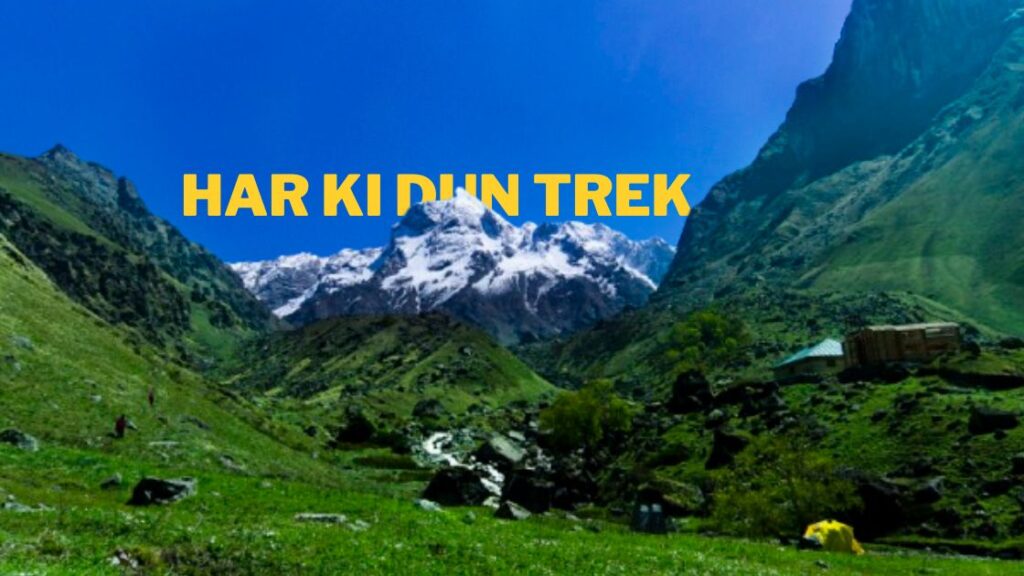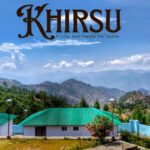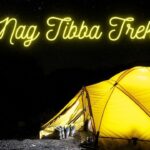Table of Contents
Har Ki Dun Trek
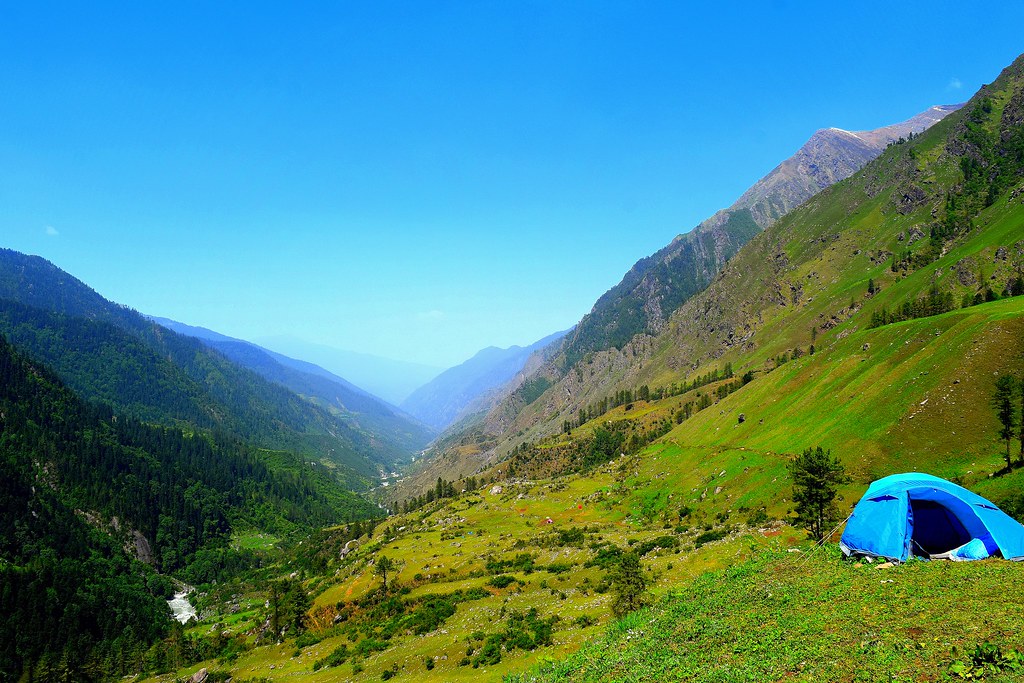
Har Ki Dun Trek is like into the paradise on earth which is placed at the Garhwal Himalayas of Uttarakhand and whoever visited, saw the anciently abode place there and called the trek as “The Lands of Gods”. At 3,566 meters (11,700 feet) above sea level, this cradle-shaped valley overlooks snow-clad peaks such as Swargarohini Black Peak and Bandarpoonch, with green meadows and dense forests in the foreground.
Ideal for beginners and experts alike, the trek to Har Ki Dun is a perfect combination of easy challenges and natural beauty, giving you a taste of some of the more challenging treks in Uttarakhand. Whether its the mythological associations to the Mahabharata or the kaleidoscopic flora and fauna that draws you here, this 7 days trip offers memories you won’t be able to forget. The post includes a detailed guide of the itinerary, best time to visit, what to expect and tips on how to plan your Har Ki Dun Trek.
Har Ki Dun Trek Overview
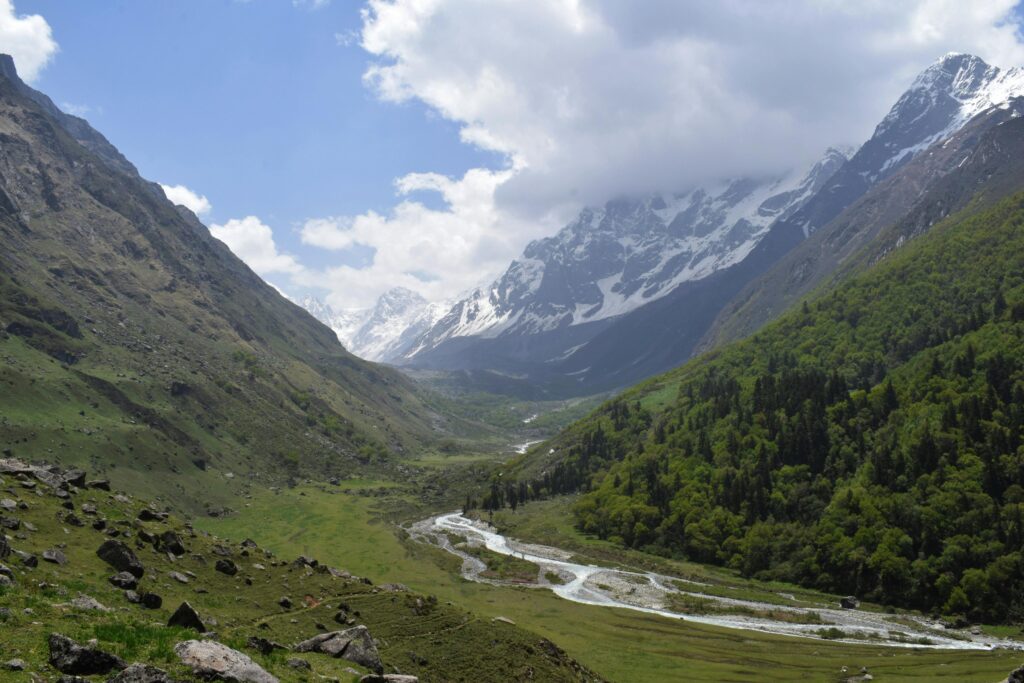
Valley of Gods as the Har Ki Dun is called is a delight for the first time trekkers and nature enthusiasts. Har Ki dun is an easy to moderate trek to one of the least explored places in the Garhwal region and is recommended for anyone who is planning to trek for the first time in the Himalayas as well for someone who has already trekked in other parts of the Himalayas. Har Ki Dun Trek is situated inside the Govind Wild life Sanctuary and National Park and another popular trek is Kedarkantha Peak Winter trek near by.
The trek provides a great view to some of the renowned peaks such as Swargarohini, Kala Nag/Black Peak, Bandar Poonch, Osla and Har ki dhun peak. Drive from Dehradun to Taluka is scenic and morning you can start early for a picturesque drive along the Yamuna (very close to the origin), alongside the Tons River to reach Taluka. The road conditions are little bit tough from Sankri to Taluka ( Starting point of Har Ki Dun Trek).
Itinerary for Har Ki Dun Trek (Detailed)
Day 1: Dehradun to Sankri (Hike: 200 km, 8-10 hours drive)
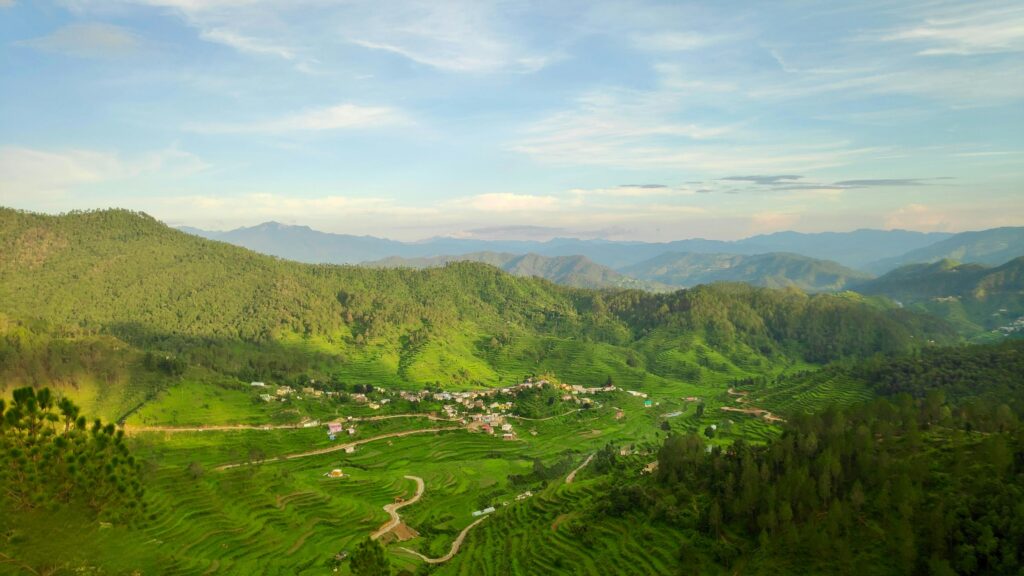
Your Har Ki Dun Trek shall commence from the gorgeous drive from Dehradun to Sankri, which will cover a total of 200 km taking 8-10 hours. The road winds its way through Mussoorie, Kempty Falls and the valleys of the Yamuna and Tons rivers, providing sights of terraced fields and pine forests. Sankri: At 1,950 meters, this is an adorable base village with guesthouses and homestays.
Get there in the evening, have a local meal and relax for the big hike the next day. There’s limited connectivity so carry extra batteries and cash (last ATM is in Mori!). To book transport in advance from Dehradun’s Grand Legacy Hotel (INR 1,100+5%GST one-way) is more convenient.
Day 2: Sankri to Taluka (Drive: 12 km, 1 hour) to Pauni Garaat (Trek: 10 km, 5-6 hours)
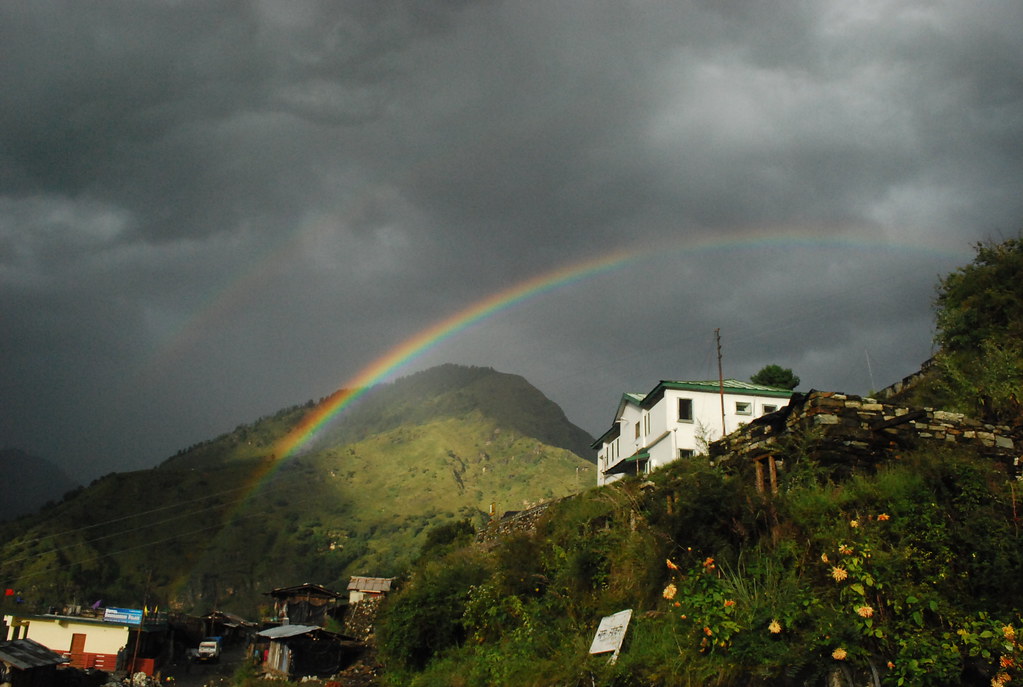
After breakfast, drive 12 kms to Taluka (1900m), a small hamlet nestled in the lap of nature located at the 1900mts / 6201 ft amsl is the starting point of our trek. An easy 10 km walk takes you to Pauni Garaat going along the Supin river and through dense chestnut, walnut and pine forest.
Cross wooden bridges spanning streams and gentle inclines with a few steeper sections. The trail is sprinkled with wildflowers in spring and snow in winter. By evening reach Pauni Garaat (2,500 meters), a beautiful camping site. Pitch tents, have a hot meal (there are usually desserts such as gulab jamun to savor) and marvel at the starry Himalayan sky.
Day 3 Pauni Garaat to Kalkattiyadhaar (Trek 8 km, 5-6 hrs)
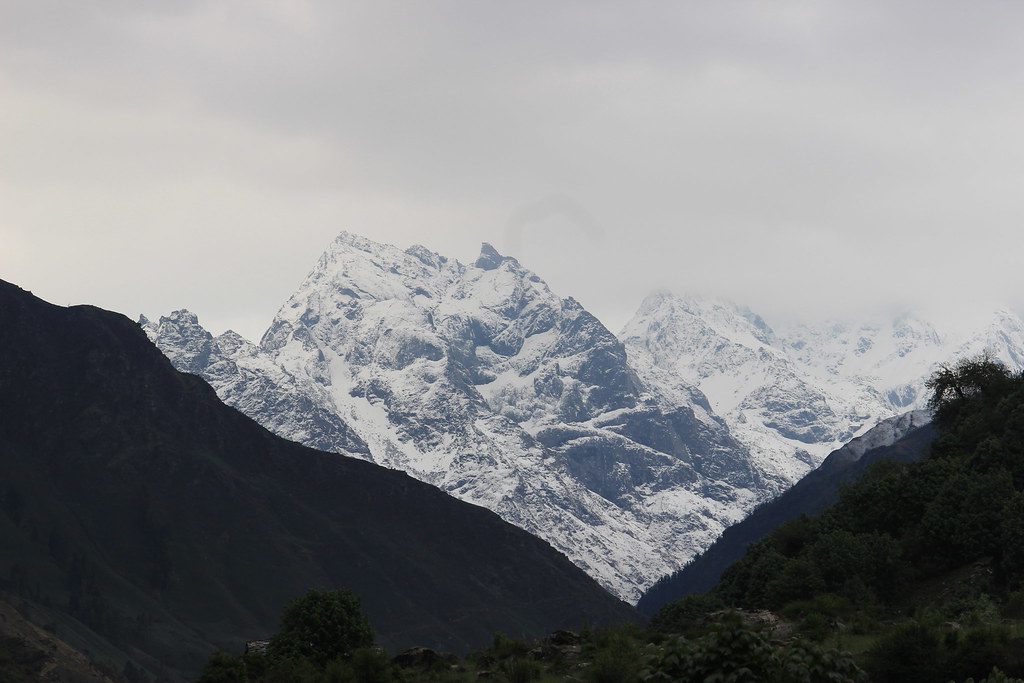
Trek 8 km From Pauni Garaat to Kalkattiyadhaar ( 2,800 meters) The view on the left opens up showing Hata Peak. The trail goes on easy climbing through meadows, coming up alive with flowers during the monsoons and for the rest of the year trek beside river Supin. Cross a massive bridge over the river and start a steep 30- to 60-minute climb to a smaller bridge.
Lush grassy meadows start appearing as Kalkattiyadhaar approaches and the hike from Jorbas becomes a wonderful stroll through them to the sight of snow covered peaks. Doss down surrounded by alpine beauty for the night, and get ready for the pinnacle of the Har Ki Dun Trek the next day.
Day 4: Kalkattiyadhaar to Har Ki Dun and Back (Trek: 10 km, 8-9 hours)
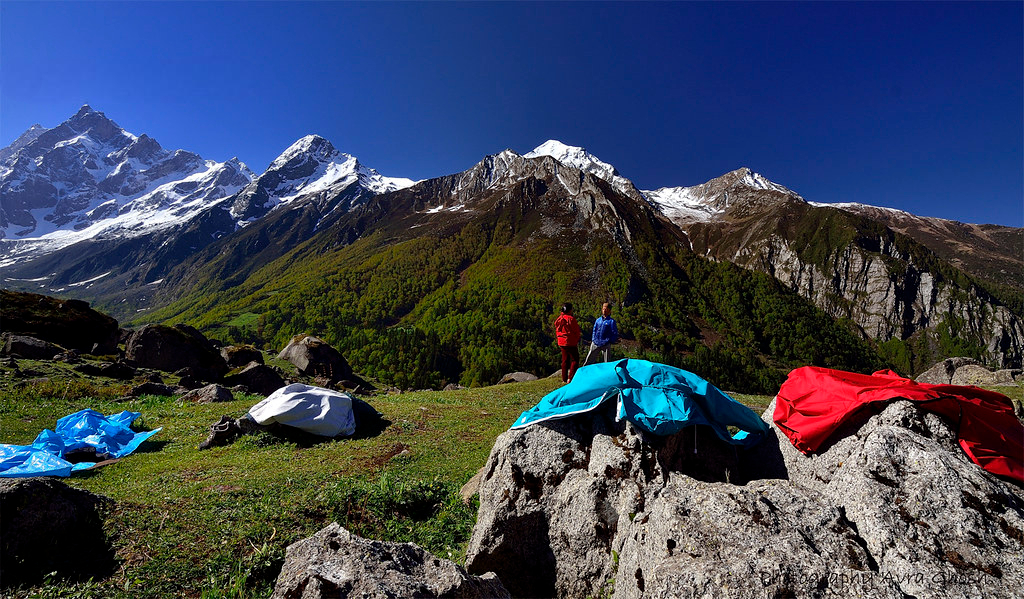
The big payoff On your most rewarding day, trek 10 km round trip from Kalkattiyadhaar to Har Ki Dun Valley (3,566 meters). The route wends its way upward across meadows and moraines, with increasingly breathtaking views of Swargarohini, Black Peak and Bandarpoonch.
Hiking into the valleys, you come to the name sake valley, a tranquil area featuring a quiet stream and the Someshwar Temple built in honour of Lord Shiva. If you have the time and energy, the optional strenuous 2.5- to 3-km walk to Marinda Tal (3,800m), a small pond surrounded by snow-covered peaks, or the 5km walk to a viewpoint of the Jaundhar Glacier (for a closer view of Swargarohini), is well worth it. By evening, return to Kalkattiyadhaar, as overnight stay in the valley is not permitted.
Day 5: Kalkattiyadhaar to Pauni Garaat/Osla (Trek: 8km, 5 hours)
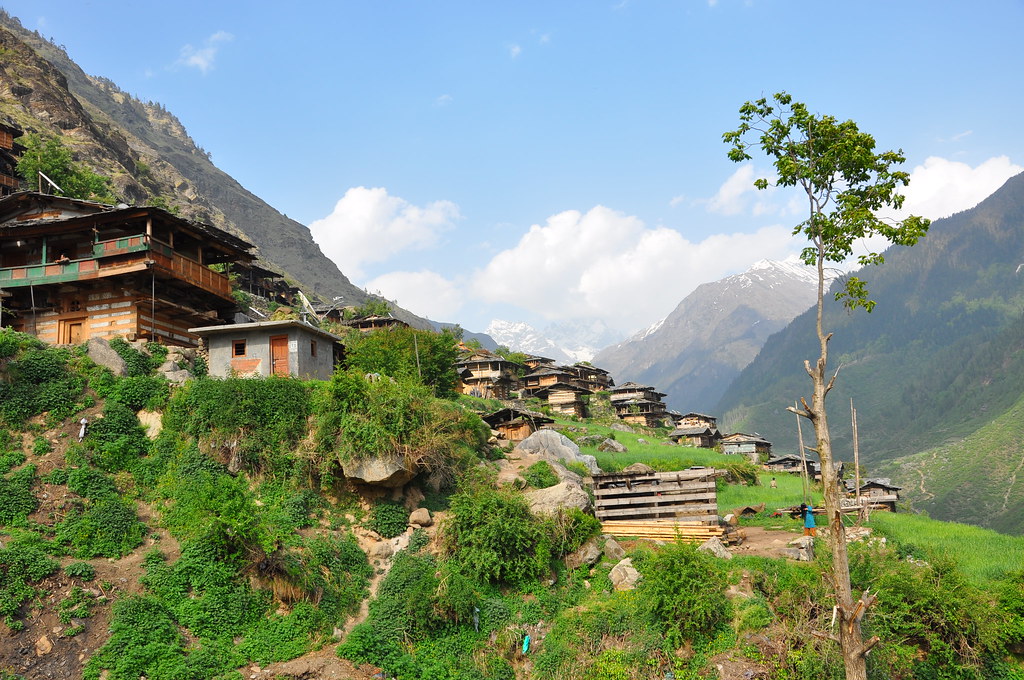
Backtrack 8 km to Pauni Garaat or head to the culturally rich village of Osla (2500 meters). Osla was once built of wood and houses here have slanting roofs with wooden doors and Someshwar Temple is here which is thought to be dedicated to the Mahabharata character Duryodhana. Meet friendly locals, enjoy a Garhwali thali (manduva roti, red rice, local dal) and see historic traditional architecture. Camp in Pauni Garaat or stay with a host family in Osla for a rustic stay. The descent is gradual, leaving plenty of time to take in the valley’s beauty.
Day 6: Pauni Garaat – Taluka (Trek 10 km, 5 – 6 hours) – Sankri (Drive 12 km, 1 hour and overnight stay)
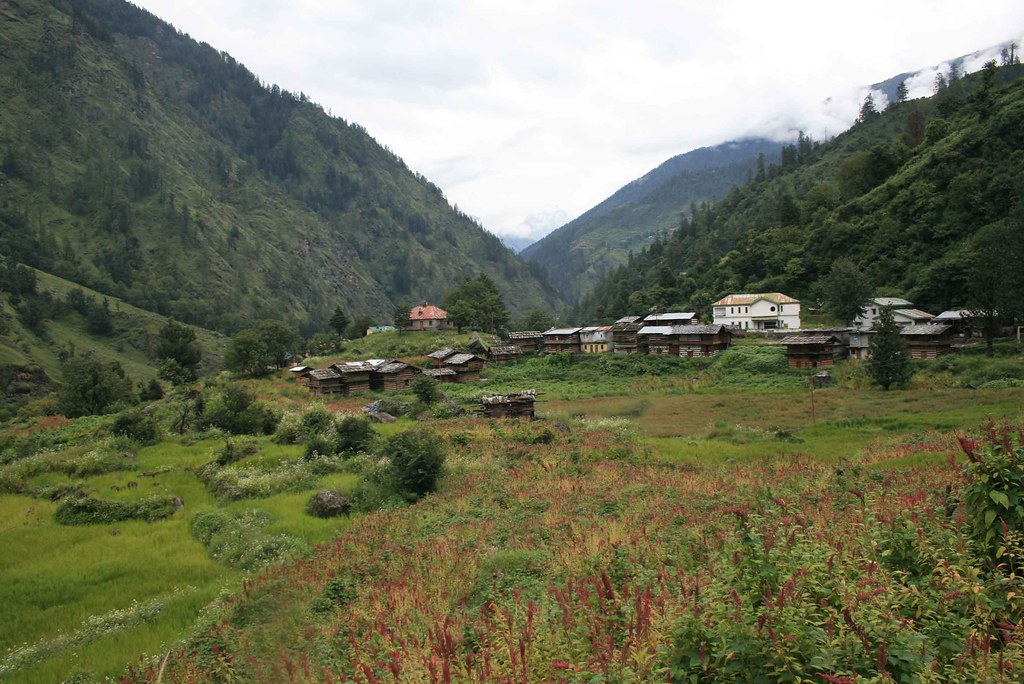
Trek 10 km backwards to Taluka, descend alongside the Supin River, past familiar forests and bridges. Much of the trail is downhill and you want to watch your footing so you don’t stress the soles of your feet. Drive 12 km from Taluka to arrive in Sankri in the afternoon. Unwind at a guesthouse, sit around a bonfire, and reminisce the best moments of the trek. This is your last night with the mountains, enjoy the tranquillity and hospitality of the local people.
Day 7: Sankri to Dehradun (Drive: 200 km, 8 – 10 hours)
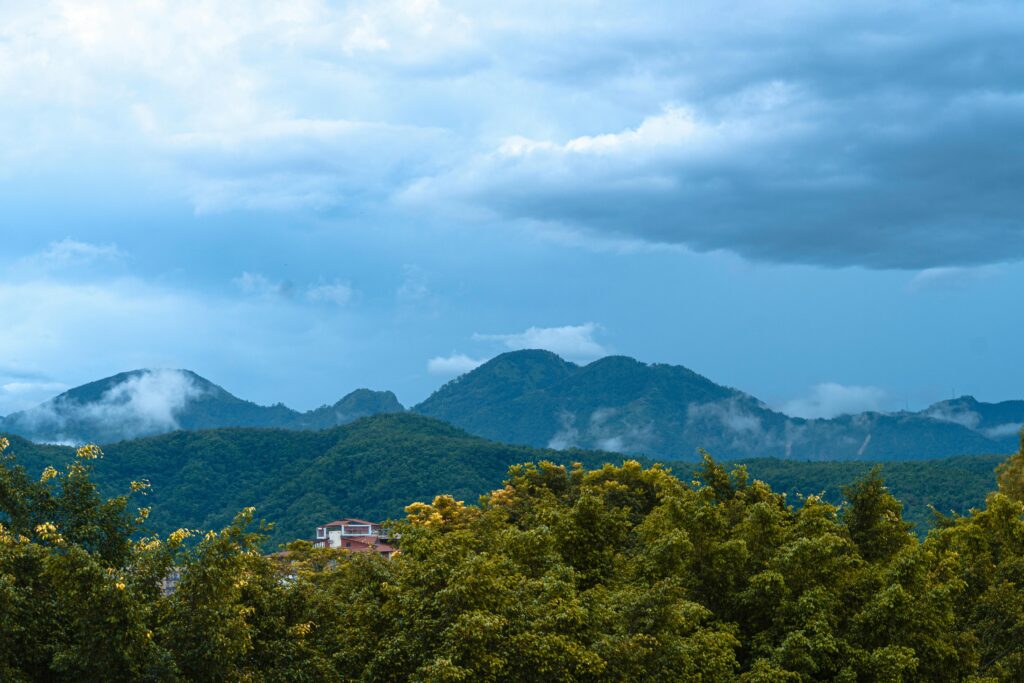
After breakfast, Dehradun:Drive back to Dehradun to end up your Har Ki Dun Trek. The 200 km drive gives that final opportunity to soak in the Tons and Yamuna valley views. By evening, reach Dehradun with memories of snowy mountains and rich meadows and the warm Garhwali hospitality. Overnight stay at Dehradun. Same day you can proceed toward Dehradun.
Best Time to Visit for Har Ki Dun Trek
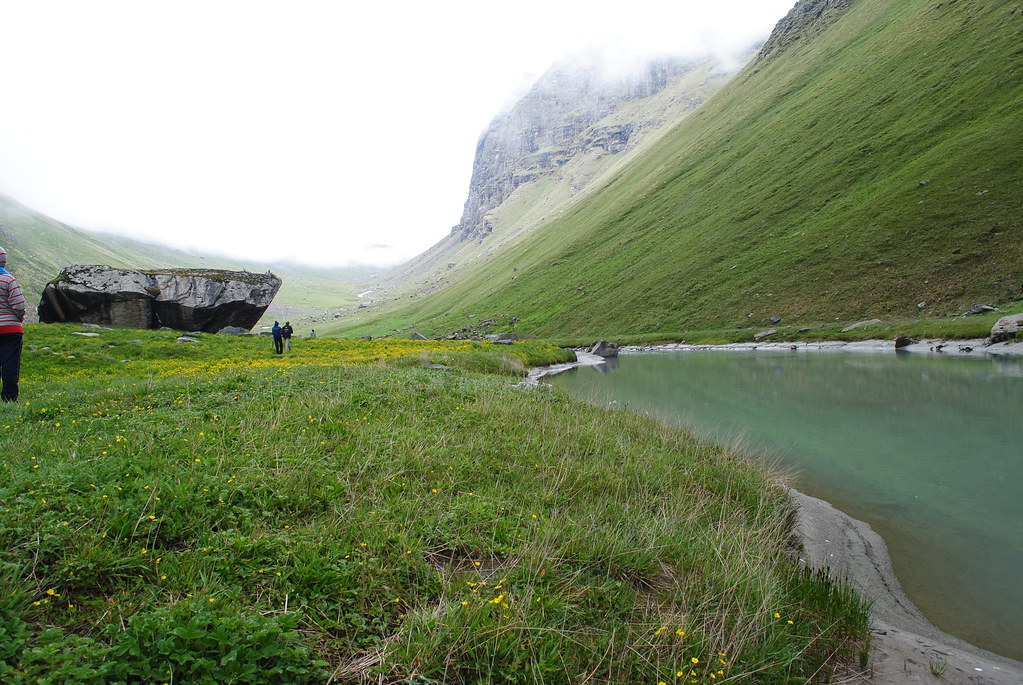
Har Ki Dun Trek can be done from April to June and September to December, resulting in two different experiences. In spring (April to June), it’s warm (5–15°C) with wildflowers (rhododendron, orchid) in full bloom and clear skies, perfect for families and newbies. The (September-November) Autumn season is beautiful with gilded scenery and fresh iridescent (2–10°C) air and stunning sunsets for photo-enthusiasts.
Winter (December) turns the valley into a frozen snow land (-5-5°C). Ideal for trekkers with prior experience opens up a challenge. The trek is also closed in January to March during which time the heavy snowfall makes it risky for trekkers, while Govind National Park remains closed due to wildlife migration. Ideally plan for spring or autumn it is pleasant, and keep warm layers with you if you are trekking in the winter months.
Cultural and Historical Significance
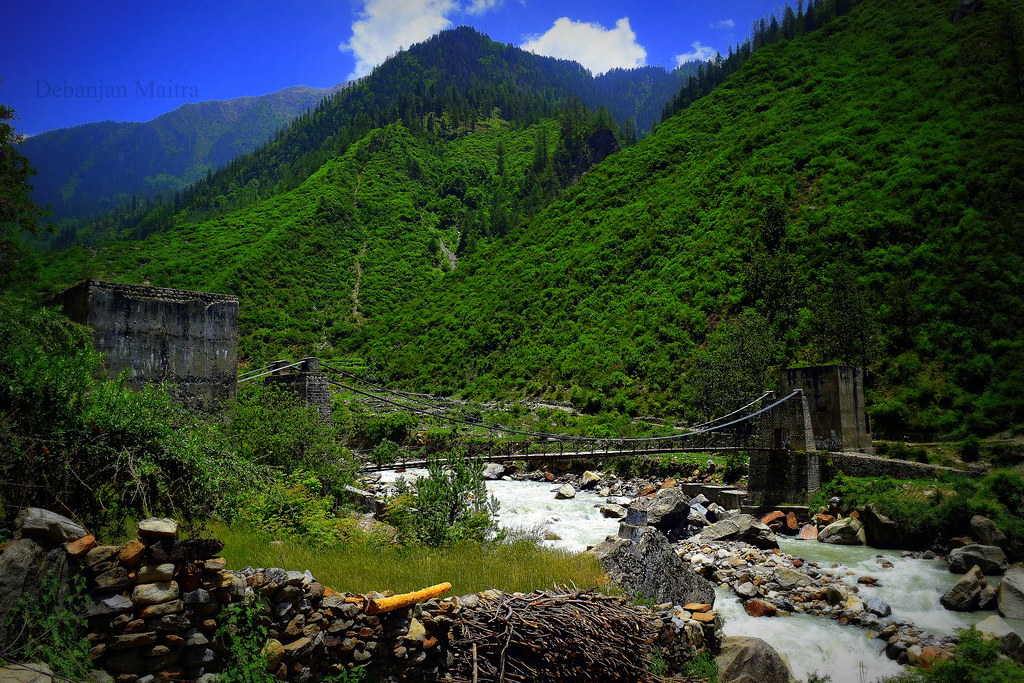
The Har Ki Dun Trek is full of myths and culture. Also known as the “Valley of Gods”, it is mentioned in the Mahabharata and it is said that the Pandavas, the heroes of the epic, took these routes and the journey past the Swargarohini peaks into the heavens. The Someshwar Temple at Osla devoted to Lord Shiva (or Duryodhana in local mythology) is indeed a cultural jewel that showcases some very distinct cultural characteristic of the region.
Villages like Osla and Gangad, where you can admire 2,000-year-old wooden architecture, offer a window into Garhwali life. Celebrate with locals during such festivals as Osla Mela – where traditional music, dance and food are showcased. The historical resonance of the trek as an ancient trade route between the Yamuna and Tons rivers, in turn, adds depth, making this a cultural journey as much as a scenic one.
Flora, Fauna, and Scenic Highlights
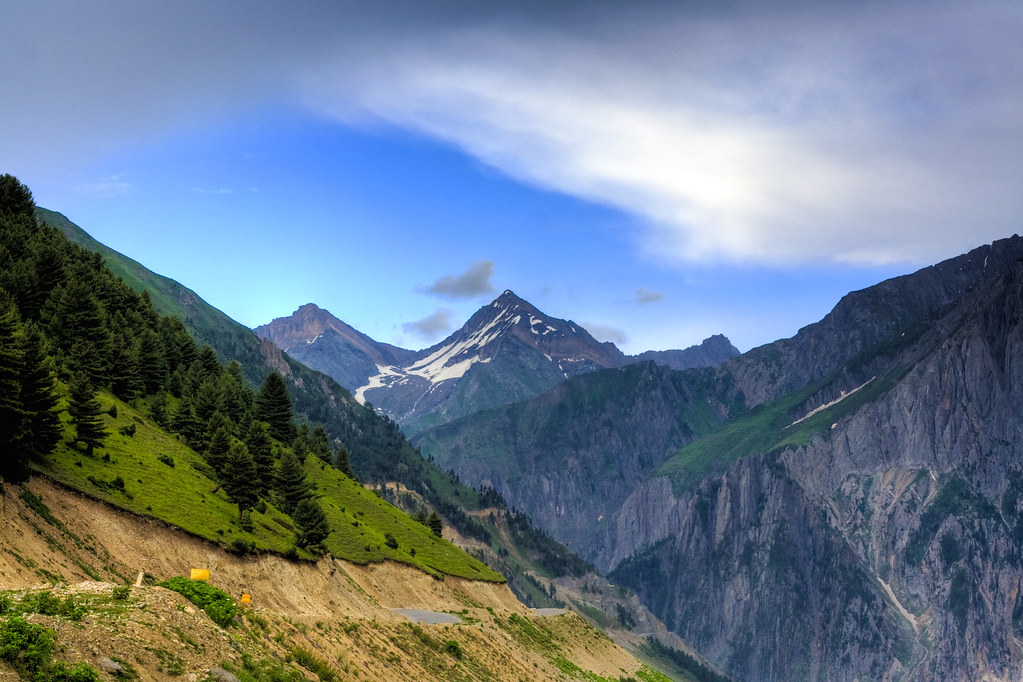
This Har Ki Dun trek is located inside the Govind National Park which is popular for its rich variety of flora and fauna. In autumn and winter you’ll find dull meadows with frozen orchids, poppies or marigolds. Look for Himalayan black bears, leopards and birdlife including the Himalayan Monal. Highlights along the trail are including, the gushing waters of Supin River, the calmness of Marinda Tal pond and the panoramic vistas of Jaundhar Glacier.
The snow capped summits of Swargarohini (6,252 meters) and Hata Peak (5,820 meters) form the skyline here and make it a paradise for photographers. The Devsu Bugyal meadow, at 10,032 feet, is a sensory treat, grassy hillocks, wildflowers and camping. The unspoiled wilderness of this trek is a paradise for nature lovers.
Trek Difficulty and Preparation
The Har Ki Dun Trek is of moderate difficulty, which means it is perfect for beginners to seasoned trekkers. There are daily treks of 8–12 kms with undulating hilly terrain, interspersed with some steep ascents and rocky paths. Since you need acclimatization to an altitude gain of 3,566 meters you should reached Dehradun one day in advance.
Get in shape with 4–6 weeks of cardio (running, cycling) and leg strength moves (squats, lunges). Other essentials comprise of: – Quality trekking shoes – Light backpack (30-40L) – Headlamp – Trekking poles – Warm clothes for winter (such as fleece or down jacket). Carry a 10,000mAh power bank on account of shortage of electricity. Some fancy the stamina certificate since some may demand it by trekking companies. With careful preparation, it is a very rewarding experience for everyone.
How to Reach Har Ki Dun Trek Base
By Air: The nearest Airport is Jolly Grant, Dehradun, which is 240 Kms from Ukhimath and is well connected to Delhi, Mumbai and Bangalore. From the airport, a taxi (INR 3,000–4,000) or shared cab can be rented to Sankri (200 km, 8–10 hours).
By Train: Dehradun Railway Station is Closest (trains like the Shatabdi Express from Delhi stop here) READ MORE 10 Things to do in Dehradun. From there, book a cab or bus to Sankri.
How to reach Har Ki Dun Trek From Dehradun Har Ki Dun can be reached by train, bus or air transport; also, it totally depends on you.
By Road: You can take your own vehicle, rent a car from Dehradun to Sankri, which drives you through beautiful Mussoorie and Tons Valley. Book through agencies like Indiahikes for organized transport (INR 1,100 one way).
Trek Cost and Inclusions
The price of Har Ki Dun Trek ranges from INR 8,000–15,000, with variables such as number of people, season and things included. Packages usually include transportation from Dehradun to Sankri, guesthouse/tent accommodation, food ( breakfast, lunch, dinner, desserts ), guides and permits. Add-ons such as backpack offloading (INR 2,000–3,000) and personal items (trekking poles, ponchos) are likely to come with an extra charge.
For budget trekkers, there are the possibilities of sharing tents and not offloading. At the best book with providers like Indiahikes, Trek The Himalayas, Bikat Adventures etc. Review cancellation policies and perhaps take out travel insurance to cover emergencies.
Safety Tips and Essential Gear
- Physical Preparation: Do 4-6 weeks of strength and cardio training in order to manage 5-7 hours of daily trekking.
- What to bring: Hiking boots, layered clothing (including fleece and waterproof jacket), headlamp, sunglasses, water bottle, and first-aid kit.
- Safety: Drink water, listen to your guide and don’t wander off the trail. Carry ID for permits.
- Wear it well: It’s winter weather time and it can be as low as -10C, so check the weather forecast and pack ponchos in case of rain (or snow).
- Leave No Trace literature: Nobody likes a litterbug, and the valley is pristine.
Conclusion
The Har Ki Dun Trek, explore the majectic Garhwal Himalayas on an adventurous and culturally enlightening journey. After a quiet walk through the Supin River to the colossal Swargarohini peaks each step uncovers the eternal beauty of the Valley of Gods. Whether you are hiking in spring for wildflowers or winter for snow filled views, this moderate hike is a very approachable and fun hike for everyone.
Hang out with warm locals in Osla, click pictures of stunning landscapes and discover the Mahabharata legacy in the region. Identify your Har Ki Dun Trek 2025, Connect with a reliable service provider and go on a journey that would cherish you lifelong memories. Tell us your trekking plans in the comments and begin your trek through the Himalayas now!
Har Ki Dun Trek FAQs: Your Complete Guide to the Valley of Gods
What Is the Har Ki Dun Trek?
The Har Ki Dun Trek is a 44–50 km trek located in the Govind Pashu Vihar National Park and Sanctuary in the state of Uttarakhand, India, with an elevation of 3,566 meters (11,700 ft). Known as the “Valley of Gods,” it’s steeped in Mahabharata mythology and considered the Pandavas’ road to heaven. The itinerary goes from Sankri village upwards along the course of the Supin River through pine forests, meadows and hamlets like Taluka and Osla to spit you out in the bowl-shaped Har Ki Dun Valley. The focal point of the trek is the Swargarohini Peak, with the Someshwar Temple nearby. There are also extensions to Marinda Tal and the Jaundhar Glacier. This is the easy trek and suitable for lazy people, families (with kids over 10), nature lovers who are interested in culture and beautiful scenery. This trek is doable in 7 days, including the journey from Dehradun, so it is a perfect Himalayan getaway.
How to Reach Har Ki Dun Trek Base Camp?
The base of the Har Ki Dun Trek is the Sankri Village, around 200 km from Dehradun. By air, you will arrive at Jolly Grant Airport, Dehradun, with connections to Delhi, Mumbai, and Bangalore. Get a taxi (₹3,000-4,000) from the airport or a shared cab (₹500-1,000) to Sankri (8-10 hours). By train, it can be accessed through Dehradun Railway Station. Take trains such as the Shatabdi Express from Delhi, and then take a Taxi or bus to Sankri. Road State buses or private taxis from Dehradun drive through Mussoorie and the Tons Valley, giving a glimpse of the scenic beauty. An organised transport from Dehradun to the Grand Legacy hotel (INR 1,100 + 5% GST one-way) is available through agencies like Indiahikes. Book early, bring cash (the last ATM is at Mori) and start early to avoid the traffic. The ride is a feast for the eyes and serves as an appetiser to your hike.
When’s the Ideal Time to Visit Har Ki Dun?
The Har Ki Dun Trek is open from April to June and September to December, and both seasons offer stunning wildlife, flora, and fauna. Spring (April–June) offers clear skies and warm temperatures (5–15°C), with wild spring flowers (rhododendrons, orchids) in bloom, making it the best season, especially for families and photography enthusiasts. The post-monsoon period, from September to November, offers clear skies, crisp air (2-10 °C), golden landscapes, and dazzling sunsets, which make for great photographs with views of Swargarohini. And in winter (from December), the valley is snow-covered (from -5 °C to 5°C) – recommended only for seasoned trekkers looking for a challenge. The trek remains closed from January to March due to snow cover and wildlife migration in Govind National Park. For novices, spring or fall may be suitable; however, winter requires additional preparation. Study the weather forecast and bring multiple layers of clothing for varying temperatures.
How Challenging is the Har Ki Dun Trek?
The level of the Har Ki Dun Trek is classified as ‘Easy to Moderate’ and is ideal for both first-time trekkers with reasonable fitness levels and experienced trekkers. The round trip is 44–50 km, covering daily treks of 8–12 km with gentle climbs and short, steep sections. The highest point, at 3,566 meters, is high enough to warrant some basic acclimatisation to the altitude, so plan to get there a day early if you start in Dehradun. Be prepared for daily treks of 5-7 hours through rocky terrain and across wooden bridges over rivers. Train with 4–6 weeks of cardio (such as running or cycling) and leg strength training (e.g., squats and lunges). The descent to Taluka will be tricky on the knees; trekking poles will be helpful. There’s no technical climbing involved, and guide-led groups take this safety into account. This is a trek suitable even for beginners, offering a beautiful taste of the Himalayas.
What Is The Highlight Of the Har Ki Dun Trek?
The Har Ki Dun trek is replete with scenic and cultural attractions. With mountains of Swargarohini, Black Peak, and Bandarpoonch wrapping around lush meadows, the Har Ki Dun valley (3,566 meters) promises panoramic views. The Supin River follows the trail, and wooden bridges make the scenery all the more picturesque. Osla village, home to 2,000-year-old wooden architecture and the Someshwar Temple, is a showcase of the Garhwali culture. Optional links to Marinda Tal (3,800m), the lake, and a view of the Jaundhar Glacier promise excitement and stunning views. Bird watching and wildflower sightings will attract nature lovers due to the region’s overall biodiversity. Devsu Bugyal meadow and pine forests are ideal areas for camping. These spots turn into a mix of scenic, adventurous, and cultural experiences that are perfect for photographers and adventurers.
What to Pack for the Har Ki Dun Trek?
Necessary gear to be used: Running trail shoes, Gore text layer or at least waterproof shoes, 30 – 40 litre backpack, layers (fleece, WARM Jacket, Winter jacket (don’t underestimate winter), WP pants, wool pants and long johns. Bring a headlamp, trekking poles, sunglasses and a reusable water bottle. For winter treks (in December), thermal layers and gloves are necessary when temperatures can dip to -10°C, and a first aid kit, sunscreen, and lip balm are essential for high altitudes. Bring snacks (such as energy bars or nuts) and a 10,000 mAh power bank, as electricity is scarce. A sleeping bag (supplied by the agencies) ensures warmth for camping. Include a rain poncho for those unexpected downpours, particularly in spring. Your pack should be light (8 to 10 kg), with a waterproof cover for equipment. Pack smart and trek comfortably.
What is the cost of the Har Ki Dun Trek?
The Har Ki Dun Trek ranges from INR 8,000 to INR 15,000 per person for a 7-day guided trek package, depending on group size, season, and inclusions. Standard packages include transportation from Dehradun to Sankri, guesthouse/tent accommodation, meals (breakfast, lunch, dinner, and dessert: gulab jamun), guides, porters, and permits. Other costs include backpack offloading (2,000 to 3,000 INR), personal gear rentals (trekking poles, ponchos: 500–1,000 INR), and travel to and from Dehradun (flights: 3,000–10,000 INR, trains: 500–2,000 INR). Like me, budget trekkers can cut some expenses by bunking with friends, sharing tents and toting their gear. It is best to book with reputable stakeholders, such as Indiahikes, Trek the Himalayas, or Bikat Adventures, for trustworthy services. Review cancellation policies and consider purchasing travel insurance for emergencies. The earlier you book (2-3 months in advance), the better the price you can expect, especially during high season (April-June and September-November).
Is the Har Ki Dun trek safe for solo and female trekkers?
The Har Ki Dun Trek is one of the safest treks for solo and female trekkers, as the trails are well-marked, the guides are professionals, and the villagers support your venture. Groups guided by outfitters such as Indiahikes provide more safety, thanks to competent trek leaders and porters. Villages such as Osla and Sankri are hospitable, and homestays ensure a safe atmosphere. Stay on marked paths, avoid hiking in remote areas alone, and follow your guide’s instructions. The trip is moderate in difficulty, requiring no technical climbing, and is suitable for solo travellers with a moderate level of fitness. Pack a first aid kit, emergency numbers and a whistle for safety. Cell service is spotty, so tell family members where you’re headed. The controlled environment of the Govind National Park lends security. With basic precautions, solo and female trekkers can have a safe & rewarding Har Ki Dun Trek. Take every step carefully, and you are good to go.
What Is the Cultural Significance of Har Ki Dun?
The Har Ki Dun is Called the “Valley of Gods,” it’s associated with the Mahabharata, and locals say the Pandavas ascended to heaven by way of Swargarohini Peak. Someshwar Temple at Osla, dedicated to Lord Shiva (or his local manifestation Duryodhana), is the cultural focal point that reveals the life of the Garhwali people. Villages with 2,000-year-old wooden architecture, such as Osla and Gangad, offer a glimpse into the rich history of Himalayan life. Mingle with locals during a festival such as Osla Mela, where you can soak up traditional music, dance, and Garhwali food (manduva roti, local dal). The route’s past life as a trade route between the Yamuna and Tons valleys adds some depth. Crossing paths with these communities enriches your trek, combining adventure with cultural interaction.
Is Permission Required for the Har Ki Dun Trek?
Yes, a permit for the Har Ki Dun Trek is required, as it is part of the Govind Pashu Vihar National Park. Trekking agencies, such as Indiahikes or Trek The Himalayas, take care of the permit bureaucracy, and the costs (which range from INR 8,000 to 15,000) are included in the overall trek package. For solo trekking, permits are available at the Forest Department at Sankri or Purola at INR 150-300 per person. Obtain a valid ID (e.g., Aadhaar, passport) and two passport-sized photographs. Permits regulate the number of groups (usually between 10 and 12 per batch) to protect the park’s ecosystem. Camping for the night inside the Har Ki Dun Valley is not permitted, so plan to return to Kalkattiyadhaar. Find out from your agency what the new regulations are, as the rules can be seasonal (especially in winter). We should respect the park’s rules, avoid littering, stay within marked lines, and keep the environment as clean and neat as possible.
I recommended you “hello hikers” for Har Ki Dun Trek 2025

